The Latest Additions to My Avery Collection by Terry Meinke
The following narrative was original written in the summer of 2021 and was published in the Thimble Collectors International Bulletin Fall 2021 issue. One additional photo has been added that was not published in the article.
__________________________________________________________________________________________________________________________________
The past year has been incredibly challenging due to the COVID pandemic. However, it is important to try to focus on the positives when times are difficult. Without the pandemic I would never have discovered ZOOM. Now I have a video conference call on my computer every Monday with my family, every Tuesday with my collector friends in the UK and Australia and once a month with my local collector club members, Thimblefools of Northern Illinois. What better way to keep in touch with family and friends. Another positive is that in the past six months I have added four fabulous Avery style needle cases to my collection, all ones I have only seen once in my 29 years of collecting. I always tell people to try and find an interesting story to go with the items they collect because it will make them more meaningful. Let me take a moment to share with you the stories I created for my new needle cases.
In February I received an email from a man in Belgium who six years earlier shared photos with me of his Dog in Kennel needle case (Figure 1). This year he decided to sell it and was wondering if I would be interested in purchasing it. Of course I was, especially since this was the only one like it I had ever seen. At the time I purchased it, it was special because I am a dog lover and have three Shetland Sheepdogs. One of my dogs was even named Avery when I adopted him in 2008 as a puppy. As you can guess my dog was named after William Avery, the Victorian Englishman who created the majority of what are now known as Avery needle cases. Little did I know at the time I purchased the Dog in Kennel that my beloved dog Avery (Figure 2) would pass away a few months later in May. Now every time I look at this needle case I think of my dog Avery, and yes, I think I even see him resting inside the brass kennel. After all, when Avery was alive, he always slept in front of the Howard Miller cabinet where my Avery collection is displayed. Avery was always guarding my needle cases and now I like to think he is inside one of them!!
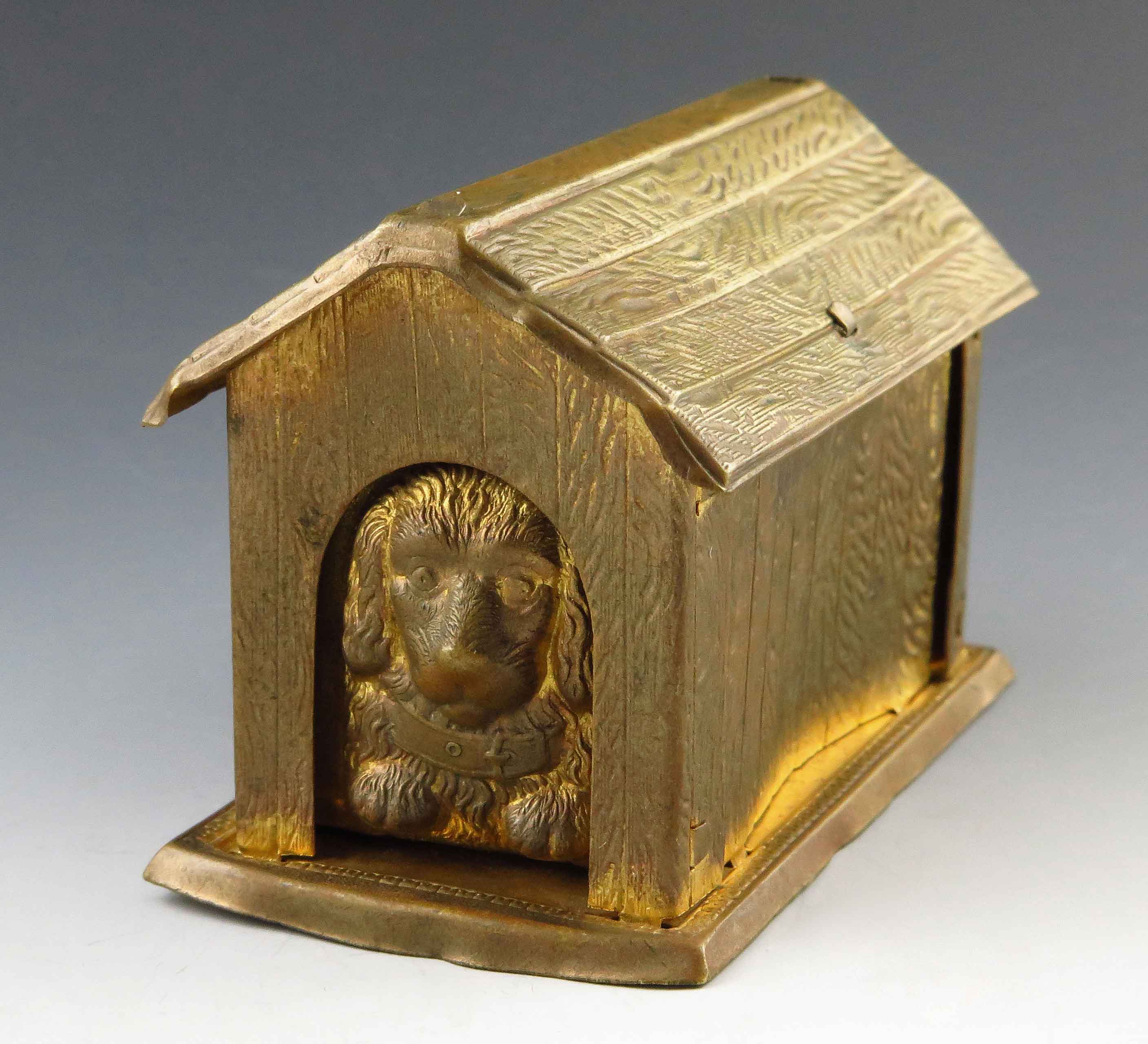
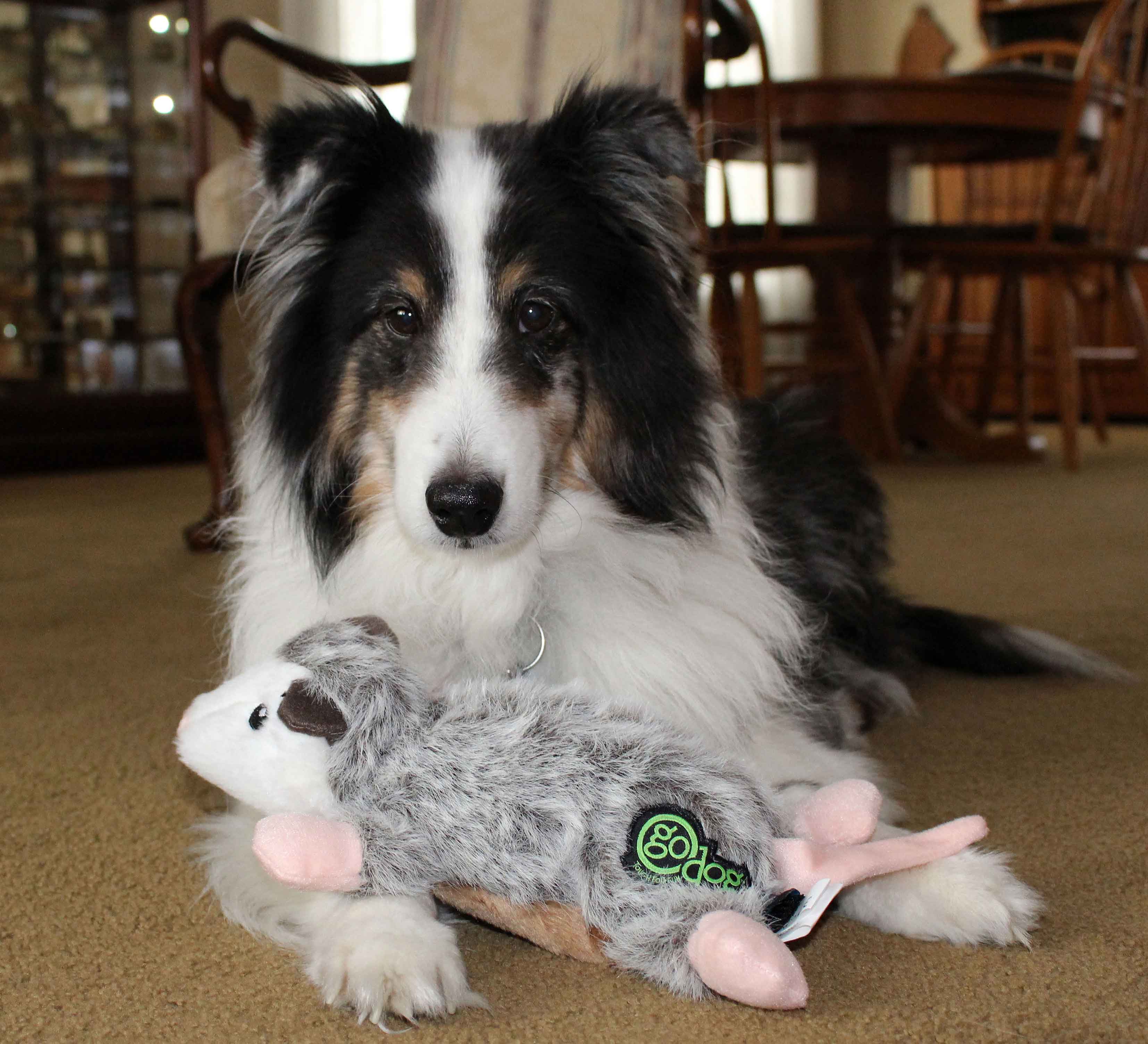
Left: Figure 1 - Dog in Kennel needle case. Right: Figure 2 - My dog Avery.
The next addition to my collection came a few months later in April 2021. Again, I was contacted by a man, this time from California, who only wanted to share photos of his Leaning Tower of Pisa needle case (Figure 3) with me. He had visited my website, the Avery Needle Case Resource Center and discovered I had the 1879 design registration for this item but had never seen an actual example of it. During our email conversations over a three-week period, he shared photos of several other items he had related to famous buildings and expressed his desire to donate them to a museum someday. I then shared with him the fact that one day my collection of Avery needle cases would be donated to the Forge Mill Needle Museum in Redditch, UK as stated in my last will and testament. After hearing this he decided to sell the Leaning Tower of Pisa to me as he thought it was a great idea to return these items to the place where they originated. Another reason I wanted this needle case was because it reminded me of the first time I visited the Leaning Tower of Pisa in Italy with my mother when I was a teenager. A few weeks before purchasing it, my mother passed away suddenly two days after her 88th birthday. I planned to surprise her on her birthday but was unable to travel to her home in Arizona during the pandemic. Now every time I walk by my display cabinet and see this needle case, I think of one of the last times my mother was in the Chicago area visiting me. In 2017 I took her to see the Leaning Tower of Niles (Figure 4). Niles is a suburb of the Chicago area and in 1934 they built a water tower in the shape of the Leaning Tower of Pisa, only it is half the size of the original. Seeing my Leaning Tower needle case brings back great memories of the fun times I had with my mother and that is how I want to remember her.
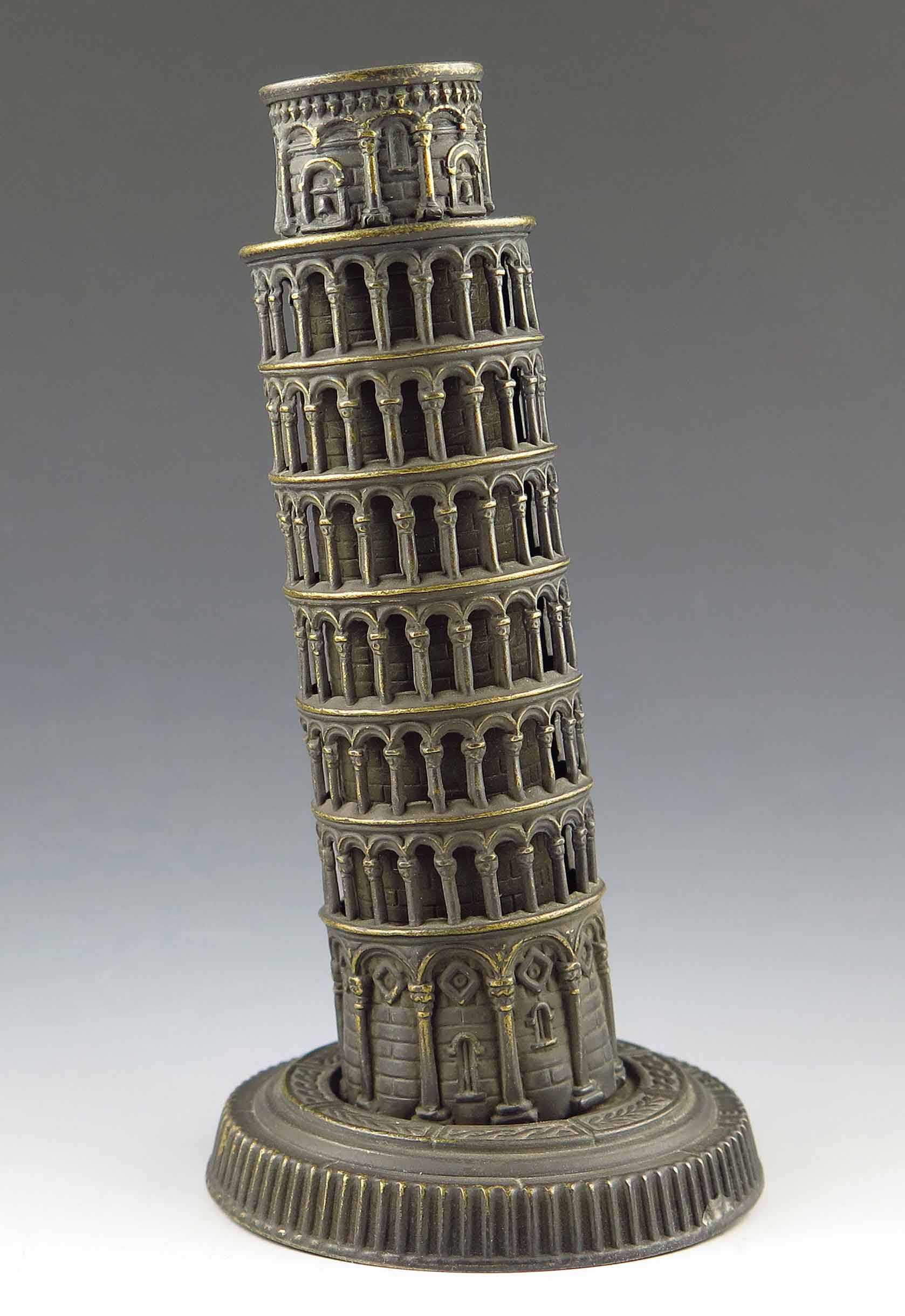
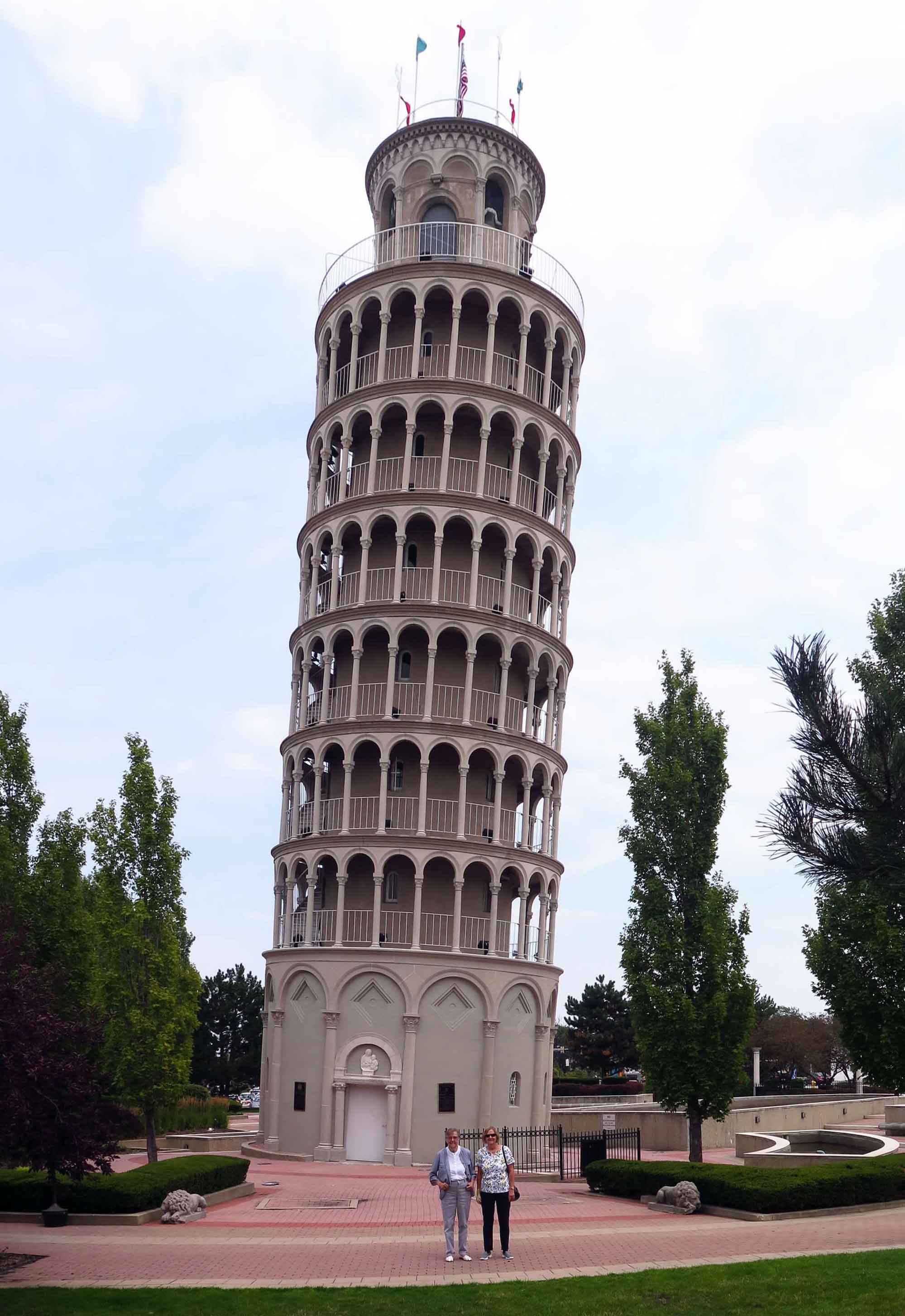
Left: Figure 3 - Leaning Tower of Pisa needle case. Right: Figure 4 - Terry with her mother at the Leaning Tower in Niles, IL.
A month later I discovered the British Flag Cart needle case (Figure 5) for sale on eBay. At the time I already had this needle case in my collection, however it was missing the animal pulling the cart and I wanted one with all of its original parts. I had a copy of the 1879 design registration (Figure 6 ) which included a photograph of the needle case showing the cart being pulled by what looked like a jockey riding on a horse. Exactly what was pulling the cart was difficult to see because the design registration document was old, slightly worn and the light reflection on it blurred the image. Only after I purchased the British Flag Cart on eBay and it arrived a few weeks later was I able to I see it was being pulled by a monkey riding on a dog! Now whenever I see my dogs “monkeying around” with their toys I think of this needle case and it brings a smile to my face.
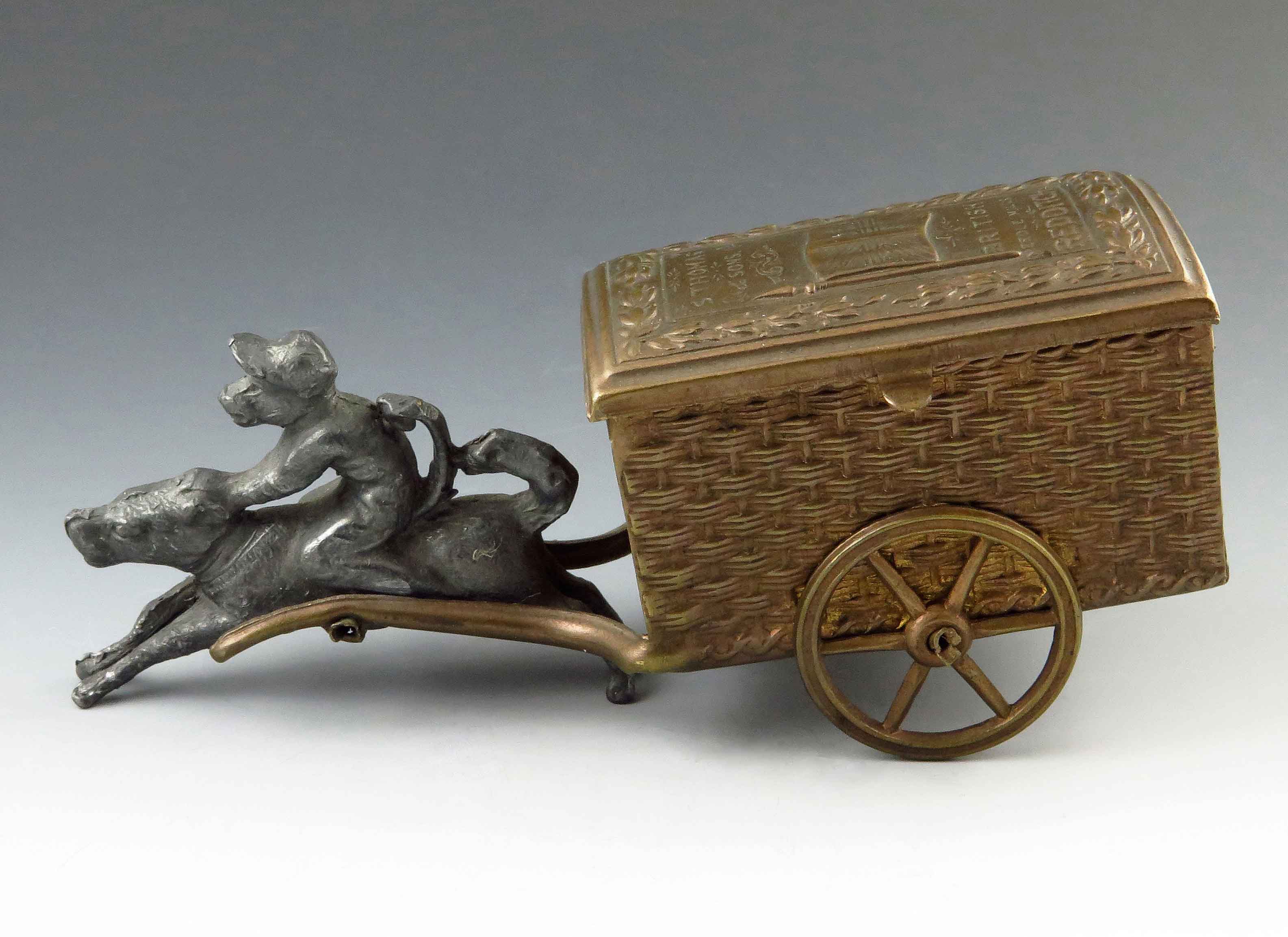
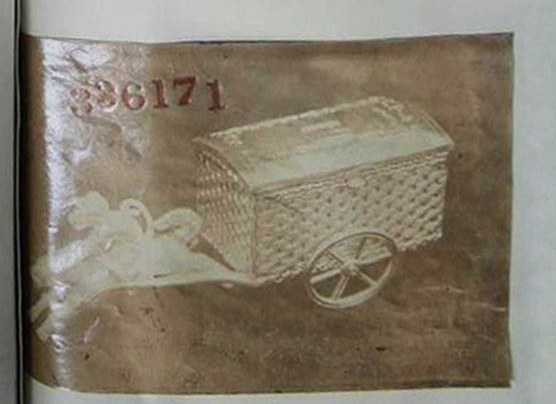
Left: Figure 5- British Flag Cart needle case. Right: Figure 6 - Design registration for the British Flag Cart needle case.
One of the latest additions to my collection I received in June and it is one of the most interesting. Although it is one of Avery’s earliest and most popular designs, known as the Quadruple patented in 1868, this one is a bit different from most you see. Whereas Quadruple needle cases are usually made of brass, this one is made of silver. But that is not what makes it unique. On the front it is engraved with three lines and the words “S. A. Luke 25 December 1869 from E. Luke” (Figure 7). I have always wondered about the people who originally owned the Avery needle cases in my collection. Who were they and what were their lives like? Unfortunately, with most of these needle cases there is no way to know. There are a few other Quadruples made in silver with people’s initials but with no surname and therefore no way to know who their owners were. And yes, there is a Quadruple known as the Lady Mayoress of London, originally made for the wife of the Lord Mayor of London in 1896-97, but I am more interested in knowing about the average woman who owned an Avery needle case. This got me to thinking, perhaps if I did a little research, maybe I could find out who S. A. Luke and E. Luke were which would make this needle case extra special.
Over the past two years I have done much research regarding the companies and individuals who created Avery style needle cases This included publishing the book Histories of the Redditch Area Manufacturers Associated with Avery Needle Cases in 2020 and being almost ready to publish my next book entitled Histories of the Birmingham Area Companies Associated with Avery Needle Cases. I just need one more trip to the Birmingham, UK area to complete my research. Hopefully, I will be able to do this later this year or in early 2022. Now I asked myself, what can I find out about the Lukes ? I soon discovered there was only one Luke family in the 1871 UK census with individuals with forenames starting with E. and S. A. Additionally, because the head of this Luke family worked as a London draper’s warehouseman, the occupation of many of the individuals who sold Avery needle cases in the London area, I felt confident this was the correct family. During the Victorian Era a draper’s warehouseman was someone who worked in a warehouse that sold cloth, fabrics and sewing items. A few days later I discover Mr. Luke’s wife was born on Christmas day, the same day and month engraved on the needle case. Let me share with the you the story I now tell about what I have named the “Quadruple: Sterling Silver - Christmas Gift” needle case (Figure 8).
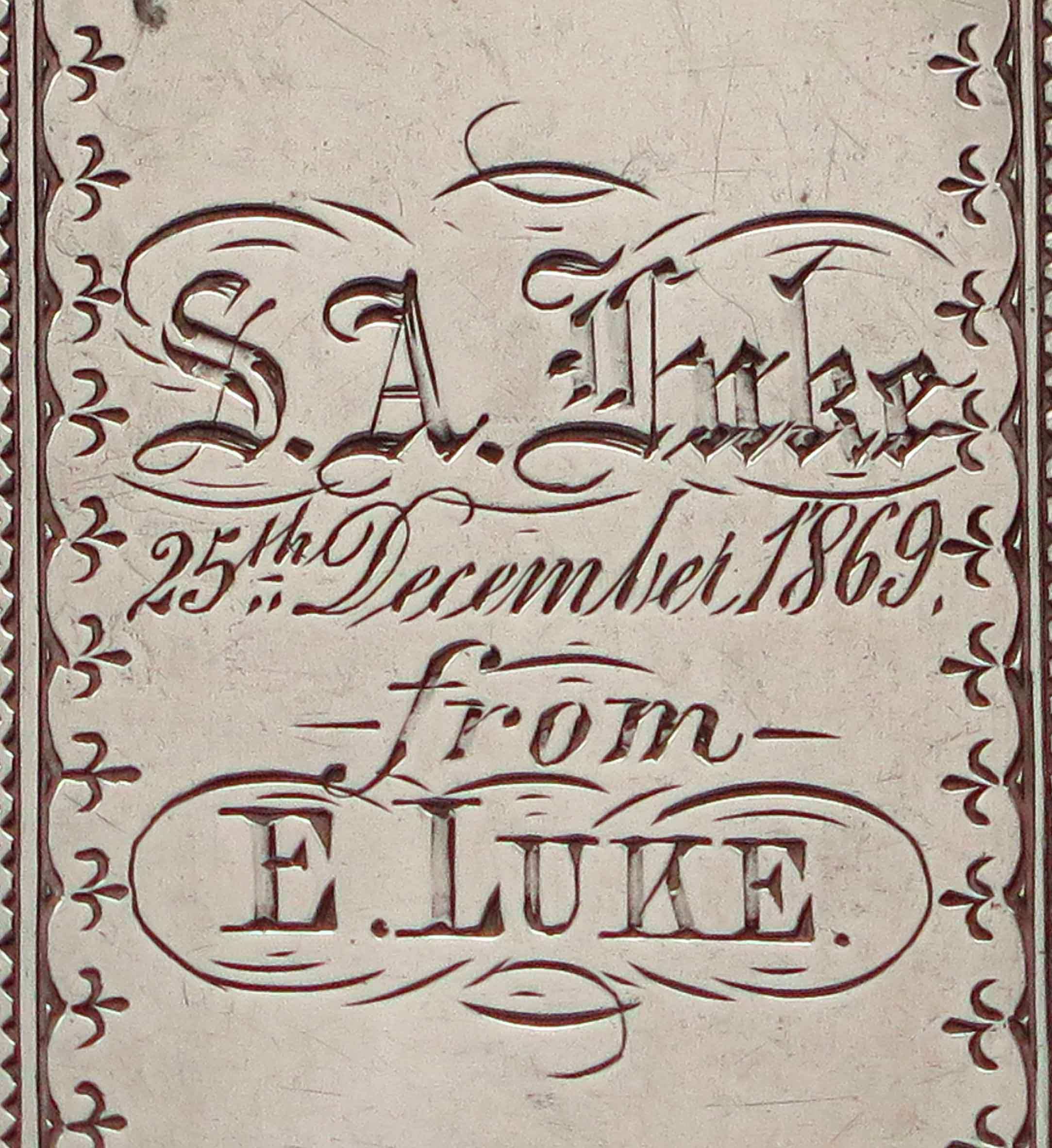
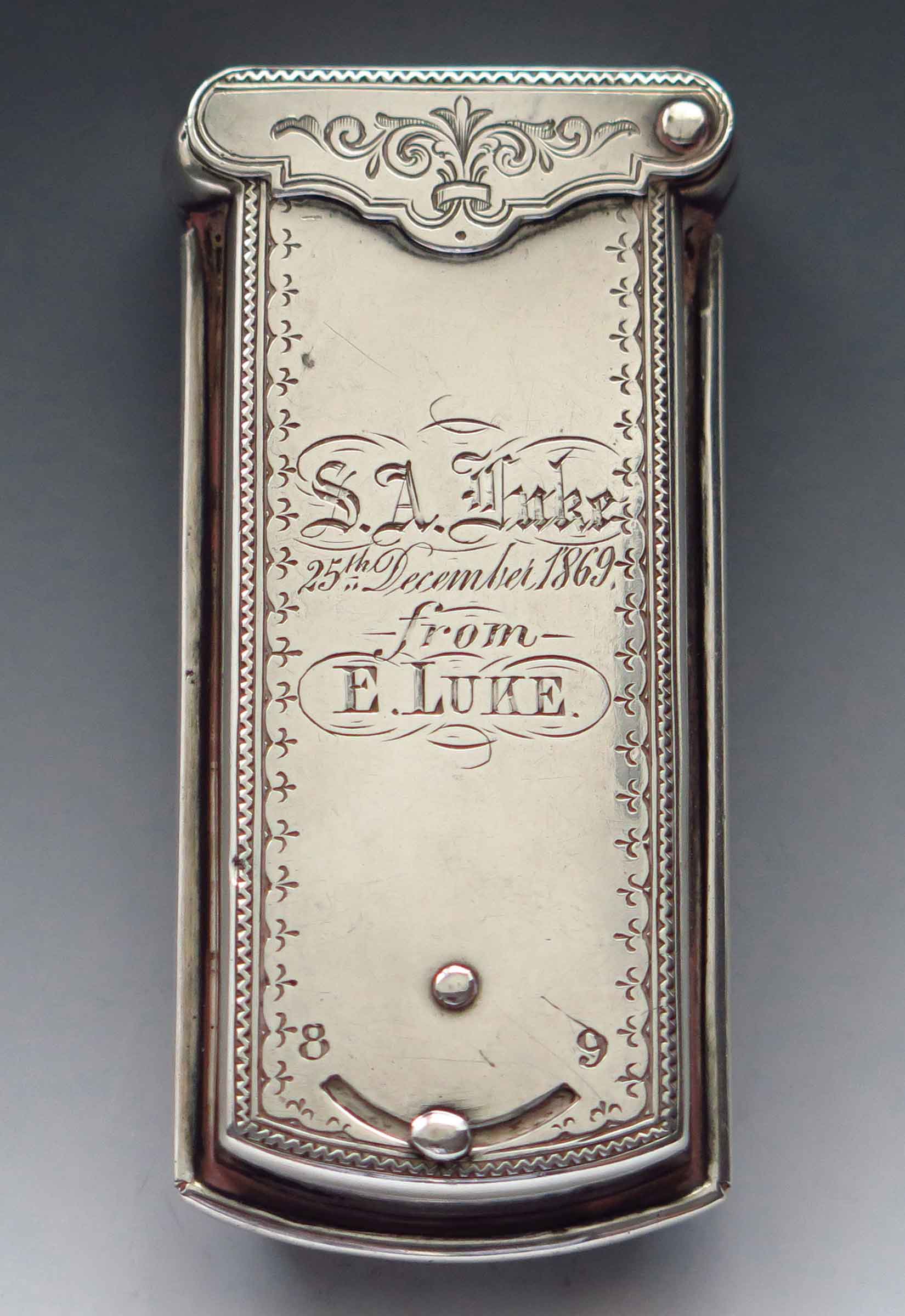
Left: Figure 7 - Detail of the Sterling Silver - Christmas Gift needle case. Right: Figure 8: Sterling Silver - Christmas Gift needle case.
Edwin Luke was born in 1839 in Walworth, a district of south London. He was the son of Abraham North Luke, a grocer and Sarah Luke (nee Gunn). Edwin had 6 siblings: 5 sisters and an older brother. During his childhood his family lived at first in the Lambeth section of south London, later moving to the town of Romford in northeast London. By 1861 they moved again, this time to Westow Street in Upper Norwood, an area of south London not far from where the Crystal Palace was moved after the Great Exhibition of 1851. His father died there in 1872 and his mother in 1877 and both were buried at the West Norwood Cemetery. By the time Edwin was 21 he was living at 12 Warwick Square in London, located half a mile south of Buckingham Palace, and was working as a commercial clerk. The fact that he was living at a place with 65 other young men, most in their late teens or early twenties who were all commercial clerks, implies he was either living in a housing project of some type or more likely living and working in a factory or warehouse.
Sarah Ann Strange was born on December 25, 1836 and was baptized at a church a few blocks northwest of St. Paul’s cathedral in London. Her parents were William Strange, a bookseller, and Ann Strange, who from 1835 until at least 1841 lived on Paternoster Row next to St. Paul’s. By 1861 her father was listed as a bookseller employing 4 boys a lthough he was occasionally listed as a publisher. Sarah Ann had 4 brothers and 2 sisters, she being the oldest daughter. For many years the Strange family lived in the London Borough of Hackney, located in northeast London. How Edwin and Sarah Ann met is still a mystery. On January 1, 1868 Edwin Luke and Sarah Ann Strange were united in marriage at the Horbury Chapel, Notting Hill in the Kensington district of London (Figure 9 ). At the time of their marriage Edwin was a 28-year-old warehouseman who lived with his parents in Upper Norwood whereas Sarah Ann was a 30-year-old spinster living at 31 Notting Hill Terrace in Kensington. Roughly two years later in 1869, Edwin purchased a Quadruple needle case made of silver and had it engraved for his wife as a combined Christmas and birthday gift. The couple lived at 31 Vaughan Road in the Brixton district of south London where Edwin worked as a draper’s warehouseman from at least 1871 until at least 1901. They had 3 children, 2 who survived to adulthood: William who was born in 1872 and died 7 weeks later of gastritis, Herbert who was born in 1874 and Percy born in 1876. Sometime after Edwin retired, the family moved to Swanley Village in Kent, about 24 miles south of London, where they spent the remainder of their lives. For many years two of Sarah’s younger sisters, who never married, lived with the Luke family. Since neither sister was employed, they either lived on money inherited from their Strange parents or the Luke family had the funds necessary to support them. Edwin Luke’s degree of success is confirmed in his son’s marriage records, one indicates Edwin attained the status of gentleman by 1908 and in another was listed as an Esquire by 1918. Sarah Ann Luke died in 1928 at age 91 followed by Edwin two years later in 1930 at age 90. After her death, Sarah Ann’s estate, valued as £27, 8s, 5d, equivalent to £1255 today (approximately $1,742), was left to her son Percy. Unfortunately, no record of Edwin’s estate has been found. Their son Herbert became an architect and surveyor who died in 1930, the same year as his father. Percy was a merchant and later an export textile agent who died in 1963.
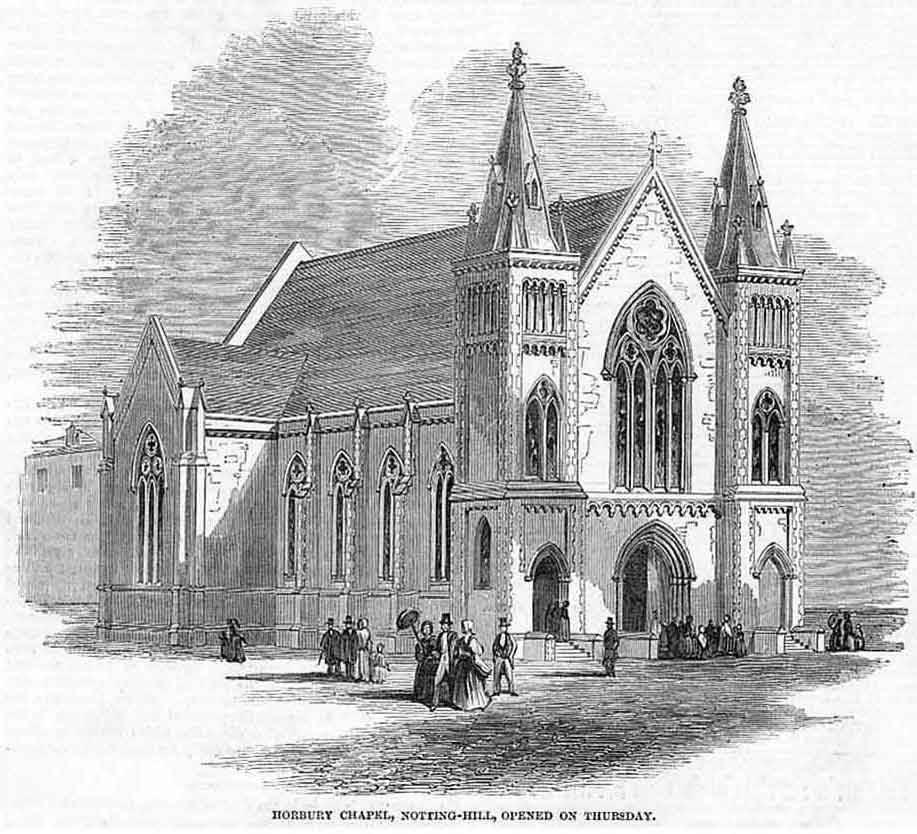
Left: Figure 9 - Horbury Chapel, Notting Hill
For more information about the Luke family (including the sources of the genealogical information) and the needle cases mentioned here, checkout the Master List section on my website at Master List .
Sources:
- Photograph taken by the author in 2015 while visiting The National Archives (TNA) in Kew, UK of design #336171 registered on June 17, 1879 by S. Thomas and Sons of Redditch
- All of the genealogical data regarding the Luke family is from Ancestry.com and from the General Register Office’s official birth, marriage and death records.
- This picture of the Horbury Chapel is from an 1849 drawing of the building sold on eBay.com in 2021
- Photographs of needle cases by Terry Meinke




